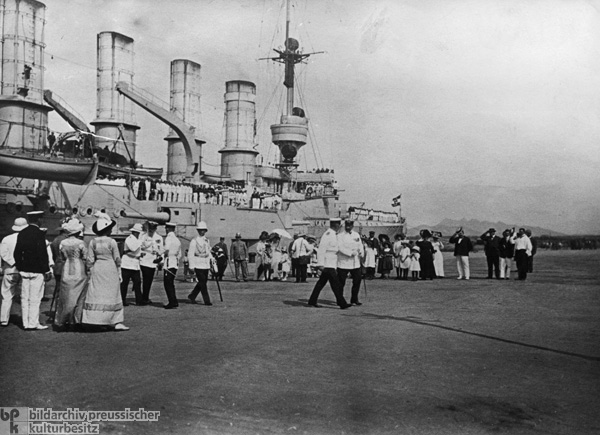













INTRODUCTION | DOCUMENTS | IMAGES | MAPS | EDITOR
|
At the turn of the century, the race to divide China into spheres of influence was in full swing among the western powers. The Germans arrived late, but no less eager to participate. The murder of two German missionaries in 1897 gave the German government the alleged justification to occupy Kiaochow, a 200-square-mile stretch along the Shantung Peninsula on the coast of the Yellow Sea. The Germans subsequently negotiated a 99-year lease with the Chinese government. Among other rights and privileges, this “Unequal Treaty” allowed them to develop the area and transform the harbor town of Tsingtau into a port of call for German ships. Tsingtau accommodated the official and private seat of the German colonial governor, residences, barracks, a brewery (still in operation today), a university and a German-Chinese school. Prince Heinrich of Prussia, the Kaiser’s brother, had taken part in the stationing of German Schutztruppen after the initial occupation of Kiaochow under the leadership of Admiral von Diederichs. Here, he is shown visiting the area a year before the outbreak of the First World War and the ensuing seizure of Kiaochow by the Japanese. In 1914, German soldiers under the command of Governor Alfred Meyer-Waldeck (1864-1928) fought for almost four months to keep the area in Germany’s possession. Due to a lack of ammunition, they were, however, forced to surrender. They were subsequently captured and sent to Japan, where they were kept as prisoners of war until the end of World War I. Kiaochow was officially returned to China in 1922.
© Bildarchiv Preußischer Kulturbesitz |
 print version
print version return to image list
return to image list previous image
previous image
